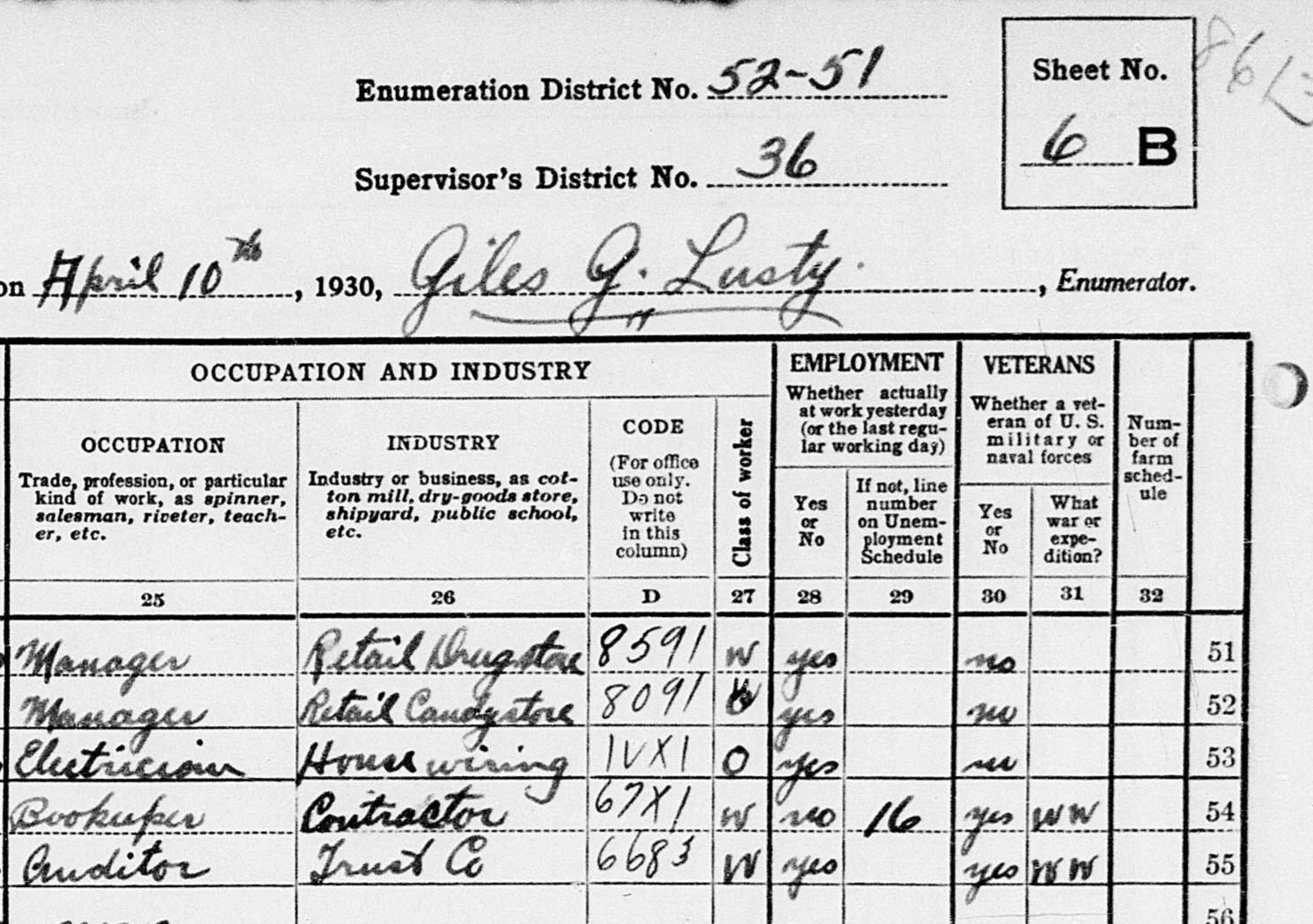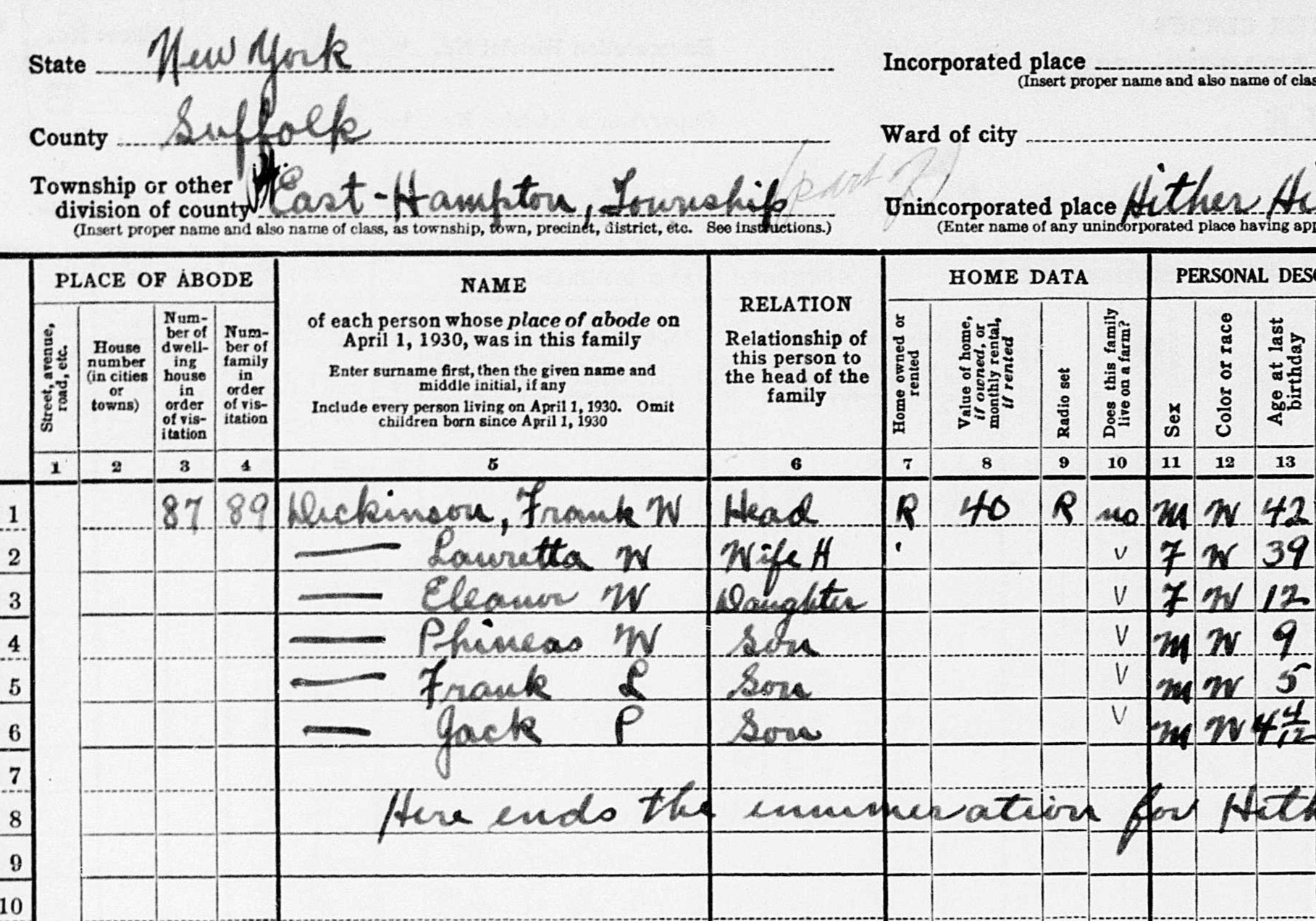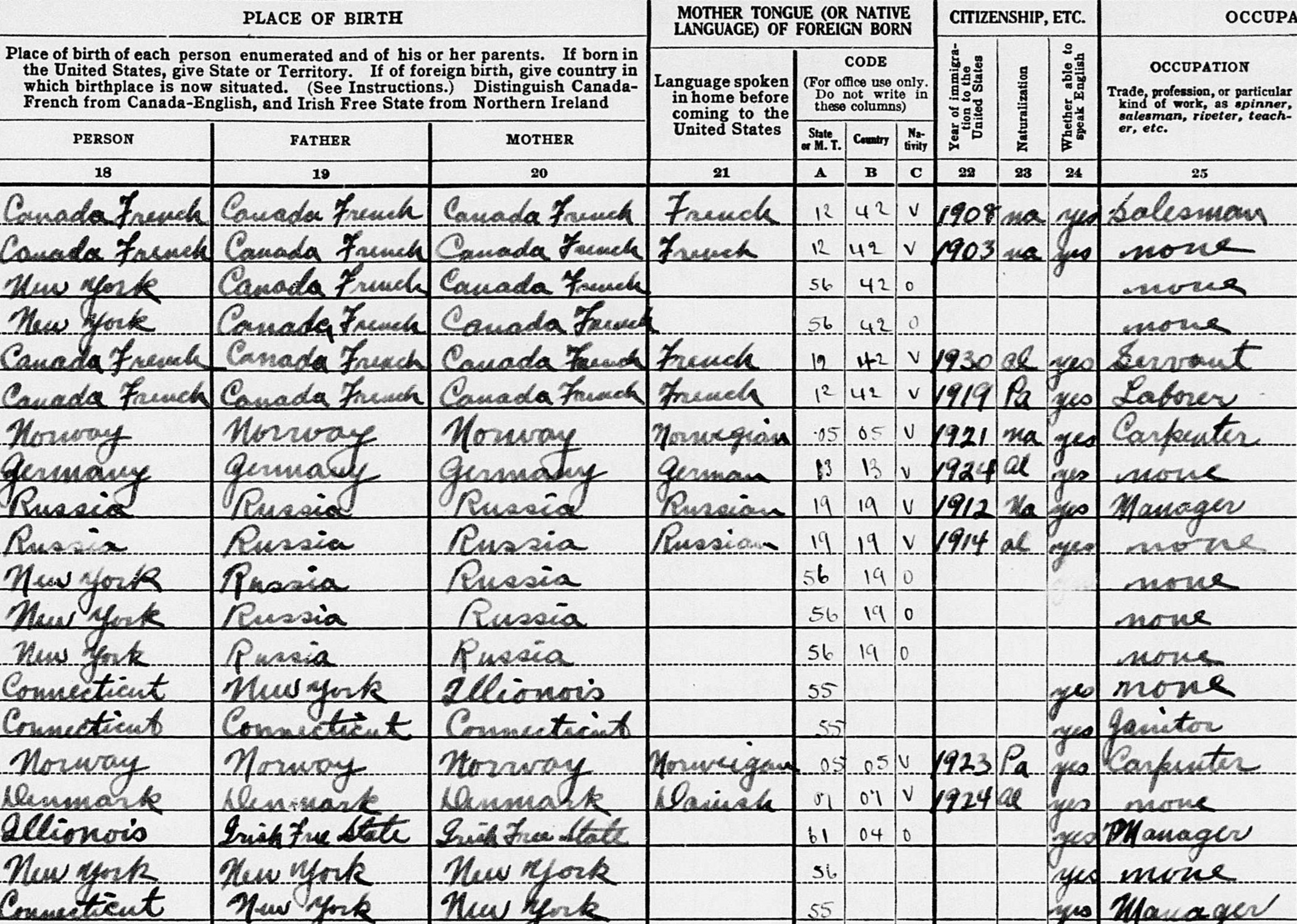
Who lived in Montauk in 1930? The U.S. Census of that year shines light not only on who lived here but also what they did and where they came from.
Tuthill, Grimes, Joyce, McDonald, Syvertsen, Paon, Pfund, Duryea, Burke, Martell, Pitts, Tuma, Gilmartin, Briand – many last names reverberate locally almost 100 years later. A number of people are remembered for their professions: Ted Cook the postmaster, Richard White the drugstore operator, Elisha Ammon the commercial fisherman, Loftus and McGunigal of the general store, Richard Webb the architect, William Belber, owner of the restaurant Bill’s Inn, Thomas Ringwood, general manager for the developer Carl Fisher.

The 1930 census was taken during the Depression. As is still the case, year-round residents tended to have blue-collar occupations. Quite a few men – few occupations were recorded for women — are listed as laborers or as doing “odd jobs” for a living, or fishing, or doing masonry, painting, plumbing, or carpentry. Other, almost-only-in-Montauk job titles include lighthouse keeper, steamboat line agent, dredge operator, Hither Hills State Park supervisor, and various Coast Guard ranks and roles. One man worked as a private chauffeur, and another was the captain of a private yacht. Two Japanese servants were recorded as living at a private estate on Ditch Plains Road; the census notes that they did speak English.

As the census illustrates, many of Montauk’s early settlers came from Canada and Northern Europe, or their ancestors did. The count distinguished between immigrants from Northern Ireland and the “Irish Free State” and between English-speaking and French-speaking Canadians (Montauk had lots of the latter). Sweden and Norway are particularly well represented, which may reflect the historical preferences of U.S. immigration policy: the Quota Act and other laws passed in the 1920s favored immigrants from Northern Europe.
 This point is driven home by a traveling exhibit on display this month at the Montauk Library. The exhibit covers immigration in New York State from 1650 to 1950, with four large panels illustrating the importance of immigrants to the state’s economy and the effect of immigration laws on families – including, specifically, the Dellapollas of Amagansett, whose family members moved from Southern Italy only a few at a time in light of quotas on certain groups of immigrants. Accompanying the display are featured books about immigration and immigrants, including the migrant workers who labored and lived on farms on eastern Long Island as well as new immigrants who arrived at Ellis Island.
This point is driven home by a traveling exhibit on display this month at the Montauk Library. The exhibit covers immigration in New York State from 1650 to 1950, with four large panels illustrating the importance of immigrants to the state’s economy and the effect of immigration laws on families – including, specifically, the Dellapollas of Amagansett, whose family members moved from Southern Italy only a few at a time in light of quotas on certain groups of immigrants. Accompanying the display are featured books about immigration and immigrants, including the migrant workers who labored and lived on farms on eastern Long Island as well as new immigrants who arrived at Ellis Island.
Check them out!



Reply or Comment